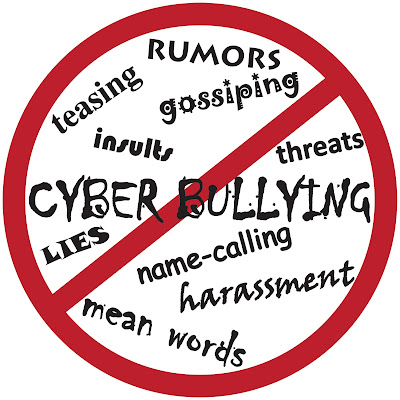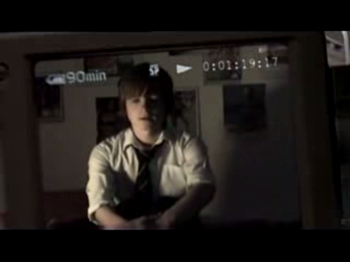24/11/2014
Eliana Dias e Lazuíta Goretti de Oliveira
| Modalidade / Nível de Ensino | Componente Curricular | Tema |
|---|---|---|
| Ensino Médio | Língua Estrangeira | Compreensão leitora |
| Ensino Médio | Língua Estrangeira | Competência pluricultural: língua como meio de acesso às manifestações culturais |
| Ensino Médio | Língua Estrangeira | Compreensão oral |
| Ensino Médio | Língua Estrangeira | Competência comunicativa: componentes linguísticos, sociolinguísticos e pragmáticos |
| Ensino Médio | Língua Estrangeira | Produção oral |
| Ensino Médio | Língua Estrangeira | Produção escrita |
O que o aluno poderá aprender com esta aula
vocabulário relacionado ao tema da aula
Duração das atividades
Conhecimentos prévios trabalhados pelo professor com o aluno
é necessário que o aluno possua conhecimentos básicos da estrutura da língua inglesa, como pronomes, verbos, adjetivos e advérbios
Estratégias e recursos da aula
recursos multimídia;
imagens veiculada na internet;
atividades de compreensão escrita;
atividades de compreensão oral;
vídeos;
atividades xerocopiadas;
atividades individuais e em grupos
CYBER-BULLYING

03%252Fcyberbullying-uma-triste-realidade%252F%3B996%3B994 (acesso em 16.11.2014)
MÓDULO 1
Atividade 1
Mostre as seguintes imagens aos alunos e peça para que as descrevam. Incentive-os a usar o vocabulário que se refere ao tema da aula e escreva-o no quadro, ajudando na realização das atividades posteriores.
2F2013%252F09%252Fcyber-bullying.jpg%3Bhttp%253A%252F%252Fparents.kernhigh.org%252Fkhsd-anti-bullying%252Fcyberbullying-definition%252F%3B1024%3B679 (acesso em 16.11.2014)

cyberstalking-e-redes-sociais-os-reflexos-da-perseguicao-digital%252F%3B1360%3B872 (acesso em 16.11.2014)
WJGHEaG4aqMVmM%3A%3Bfa7wx_XP72WWwM%3BWJGHEaG4aqMVmM%3A&imgrc=WJGHEaG4aqMVmM%253A%3BJ2b1q3odm90yDM%
Atividade 2
Projete as seguintes questões que servirão de base para a discussão sobre o tema da aula. Divida os alunos em duplas ou em trios. Circule pela sala, observando a discussão das questões propostas. Depois de 15 minutos, abra a discussão dos grupos, de forma que todos possam compartilhar suas ideias discutidas nos pares ou trios. Contribua com a discussão, introduzindo e escrevendo no quadro todo o vocabulário apresentado durante a discussão dos grupos e pertinente ao tema da aula.
Food for thought

LEARN VOCABULARY
Cyberstalking / Denigration / Exclusion / Flaming / Harassment / Impersonation /Outing or trickery / Trolling
|
|
Online fights using electronic messages with angry and vulgar language |
|
|
Repeatedly sending offensive, rude and insulting messages. |
|
|
Repeatedly sending message that include threats of harm or are highly intimidating engaging in other online activities that make a person afraid for his or her safety |
|
|
“Dissing” someone online. Sending or posting cruel gossip or rumors about a person to damage his or her reputation or friendships. |
|
|
Intentionally excluding someone from an online group, like a “buddy list” or a game |
|
|
Intentionally posting provocative messages about sensitive subjects to create conflict, upset people, and bait them into “flaming” or fighting. |
|
|
Breaking into someone’s account, posing as that person and sending messages to make the person look bad, get that person in trouble or danger, or damage that person's reputation or friendships. |
|
|
Sharing someone’s secrets or embarrassing information online. Tricking someone into revealing secrets or embarrassing information, which is then shared online. |
Adaptado de: http://www.absolutenglish.org/IMG/pdf/sequencecyberbullying.pdf (acesso em 16.11.2014)
MÓDULO 2
Atividade 4
Distribua o seguinte texto para os alunos e disponibilize um tempo de 15 minutos para que realizem uma primeira leitura silenciosa. Peça para que não se preocupem com as palavras desconhecidas, e que se preocupem apenas em entender a ideia principal do texto. Em uma segunda leitura, os alunos deverão sublinhar as palavras desconhecidas e que realmente sejam importantes para o entendimento do conteúdo apresentado no texto.
Solicite a leitura do texto em voz alta, por mais de um aluno. A fim de possibilitar que todos participem da leitura, o texto poderá ser lido mais de uma vez.
Escreva no quadro algumas das palavras sublinhadas pelos alunos e tire suas dúvidas quanto ao significado. Se houver dicionários disponíveis, distribua-os entre os alunos, mas incentive-os a não ficarem presos às definições de todas as palavras desconhecidas.
Children as young as seven are posting abusive and damaging comments about their teachers on social networking websites such as Facebook and Twitter, according to new research. Even worse, some of the children's parents are adding their comments to what constitutes a serious escalation in the cyber-bullying of educators. The British teaching union NASUWT conducted a survey of more than 7,500 teachers. It found that almost half of teachers had reported abuse to the school, police or the website on which the insults were posted. Other figures show that more than 20 per cent of teachers felt they had been cyber-bullied in the past year. Three per cent of the comments were from under-elevens. The survey revealed that 64% of the comments were made by pupils, 27% by parents, and the rest a mix of both. Many of the comments related to teachers' appearance, competence, and sexuality. Chris Keates, NASUWT general secretary, said: "It is clear that steps need to be taken to protect teachers from the abuse of social media by pupils and parents." She added: "Teachers are often devastated by the vile nature of the abuse they are suffering. Some have lost their confidence to teach once they see foul and personal remarks made by pupils in their classes and have left the profession." Many teachers are afraid to report the abuse. They think it would lead to more trouble.
Fonte: http://www.breakingnewsenglish.com/1404/140427-cyberbullying.html (acesso em 16.11.2014)
Atividade 5
Depois de realizadas as leituras e a compreensão do vocabulário, os alunos deverão realizar as atividades a seguir, que se relacionam à compreensão do texto. Poderão trabalhar em duplas, criando um ambiente interativo. Depois de, aproximadamente, 15 minutos, realize a correção das atividades, tirando possíveis dúvidas.
A. TRUE / FALSE:Read the headline. Guess if a-h below are true (T) or false (F).
| a. |
Most students posting abuse about teachers are seven years old. |
T / F |
| b. |
The cyber-bullying of teachers is getting worse. |
T / F |
| c. |
A teaching union surveyed 7,500 teachers about cyber-bullying. |
T / F |
| d. |
A fifth of teachers reported being cyber-bullied in the past year. |
T / F |
| e. |
Over a quarter of abusive comments came from parents. |
T / F |
| f. |
A union leader said sufficient steps had been taken to protect teachers. |
T / F |
| g. |
No teachers have quit their job over the cyber-bullying. |
T / F |
| h. |
Teachers are showing no fear in reporting the abuse. |
T / F |
B. SYNONYM MATCH:Match the following synonyms from the article.
| 1. |
abusive |
a. |
combination |
| 2 |
constitutes |
b. |
carried out |
| 3. |
escalation |
c. |
statistics |
| 4. |
conducted |
d. |
amounts to |
| 5. |
figures |
e. |
nasty |
| 6. |
revealed |
f. |
insulting |
| 7. |
mix |
g. |
ability |
| 8. |
competence |
h. |
upsurge |
| 9. |
vile |
i. |
result in |
| 10. |
lead to |
j. |
showed |
C. PHRASE MATCH: (Sometimes more than one choice is possible.)
| 1. |
posting abusive and |
a. |
been cyber-bullied |
| 2 |
a serious |
b. |
under-elevens |
| 3. |
teaching |
c. |
to protect teachers |
| 4. |
teachers felt they had |
d. |
damaging comments |
| 5. |
3% of the comments were from |
e. |
nature of the abuse |
| 6. |
comments related to |
f. |
to more trouble |
| 7. |
steps need to be taken |
g. |
escalation |
| 8. |
devastated by the vile |
h. |
confidence to teach |
| 9. |
Some have lost their |
i. |
union |
| 10. |
They think it would lead |
j. |
teachers' appearance |
D. ANSWER THE FOLLOWING QUESTIONS:
1. How old are the youngest children posting on social networks?
2. What is there a serious escalation in?
3. What / Who conducted a survey of teachers?
4. How many teachers had reported abuse?
5. What proportion of under-eleven-year-olds made comments?
6. What was the percentage of comments from parents?
7. Why did a union official say steps needed to be taken?
8. How do the teachers feel about the vile nature of the abuse?
9. What have some teachers lost?
10. Why are many teachers afraid to report abuse?
Atividades adaptadas de: http://www.breakingnewsenglish.com/1404/140427-cyberbullying.html (acesso em 16.11.2014)
Atividade 6

Imagem ilustrativa do referido vídeo
No laboratório de informática, os alunos deverão acessar o vídeo "Cyberbullying - Let´s fight it together", disponível em: http://learnenglishteens.britishcouncil.org/study-break/video-zone/cyberbullying-lets-fight-it-together (acesso em 16.11.2014). Os alunos deverão assistir ao vídeo quantas vezes acharem necessárias para realizarem as atividades propostas.
Verifique, sempre, a boa qualidade dos recursos multimídias, como fones de ouvido, computadores e caixas de som, que poderão auxiliar na boa produção dos seus alunos.
Apresente o vídeo aos alunos, projetando o seguinte texto inicial. Solicite que um dos alunos o leia em voz alta. Promova uma breve discussão sobre o texto e, em seguida, peça para que assistam ao vídeo.
Cyberbullying is a problem that everyone who uses the internet needs to be aware of. February 11th is
Safer Internet Day in the UK. This video was created for schoolchildren in the UK to watch to warn them
about the dangers of cyberbullying.
Distribua uma cópia dos seguintes exercícios para cada aluno que deverá realizá-los ao assistirem ao vídeo proposto. Estabeleça um tempo de 20 minutos para que toda a atividade seja realizada. Circule pela sala, auxiliando os alunos com suas possíveis dúvidas. A correção poderá ser feita oralmente e revezando os turnos de fala dos alunos, criando um ambiente interativo e participativo.
Recursos Complementares
Para outras atividades com o tema da aula, acesse:
http://www.absolutenglish.org/IMG/pdf/sequencecyberbullying.pdf;
http://listenaminute.com/c/cyber-bullying.html;
http://safeonline.me/printResources/underAttackLesson.pdf;
http://work.alberta.ca/documents/Cyberbullying.pdf;
http://www.educationworld.com/a_tsl/archives/03-1/lesson002.shtml;
http://www.henry4school.fr/School/bullying/lp.htm;
http://www.henry4school.fr/School/bullying/bully.htm.
(acessos em 16.11.2014)
Avaliação
- Os alunos deverão escrever cartazes ou panfletos dando conselhos para pessoas que usam redes sociais sobre como se prevenirem de possíveis ameaças possibilitadas por meio de ambientes virtuais. Compartilhe as produções dos alunos em uma plataforma virtual, especialmente criada para esse fim. Conforme a qualidade da produção dos alunos, disponibilize os cartazes ou panfletos, afixando-os em locais de fácil visualização pelos outros alunos e funcionários da escola.
Sem estrelas 0 classificações
- Cinco estrelas 0/0 - 0%
- Quatro estrelas 0/0 - 0%
- Três estrelas 0/0 - 0%
- Duas estrelas 0/0 - 0%
- Uma estrela 0/0 - 0%
Denuncie opiniões ou materiais indevidos!
- Sugestão de aula
- Aulas
- Coleções de aulas
- Criar aula
- Criar individual
- Criar em equipe
- Gerenciar equipes
- Minhas aulas
- Orientações
- Criando equipes
- Dicas para a produção de aulas
- Reflexões pedagógicas
- Utilizando a ferramenta
- Artigo: portal educacional
- Estatísticas de uso do Portal
- Estatísticas de aulas
- Estatísticas de recursos
- Estatísticas de visitas
- Recursos utilizados em aulas
- Reflexões pedagógicas
- Informações de cursos
- Cursos
- e-Proinfo
- Materiais de cursos
- Materiais de estudo
- Artigos e publicações
- Assuntos relevantes
- Avaliações
- Ciência do cotidiano
- Destaques internacionais
- Dicas práticas
- Educação profissional e tecnológica
- Entrevistas
- Estratégias pedagógicas
- Inovações tecnológicas
- Materiais de cursos
- Materiais de evento
- Orientações e diretrizes
- Parâmetros e referencias
- Programas em vídeos
- Tutoriais
- TVescola
- Ferramentas do portal
- Fórum
- Portal do Youtube
- Compartilhando apresentação
- Ferramentas pela internet
- Blog
- Compartilhe vídeos
- Comunicação on-line
- Crie e compartilhe apresentações
- Edite e compartilhe fotos
- Escrita colaborativa
- Junte-se a uma comunicade
- Lista de discussão
- Organize e compartilhe favoritos
- Podcast
- Rádio/TVs Universitárias e outros
- Redes Sociais
- Robô Ed
PLATAFORMA FREIRE
- Bibliotecas
- Capacitação Proinfo Integrado
- Cultura
- Dicionários, tradutores e enciclopédias
- Educação inclusiva
- Geoprocessamentos
- Inclusão digital
- Infográficos
- Jogos educativos
- Jornais
- Museus
- Observatórios e planetários
- Organizações governamentais
- Plataformas educacionais
- Portais educacionais e outros
- Portal MEC
- Prêmio professores do Brasil
- Produções de professores
- Projetos de escolas
- Projetos inovadores
- Projetos sociais e educacionais
- Rádio escola
- Recursos digitais
- Revistas
- Sites de busca
- Sites temáticos do portal e TVescola
- Softwares de edição e outros
- Softwares educacionais
- Um computador por aluno

- Ryan Oksenhorn
- Ryan Snow
- Sergio Caldara
- Shane Miler
- Shane Herzog
- Sotirios Papavasilopoulos
- Stephen JB Thomas
- Tarah
- Valera Nazarov
- ZbigniewMa K Flakus



